According to the National Institutes of Health (NIH), male and female pattern hair loss affects an estimated 50 million men and 30 million women in the United States.
More than 50% percent of men over age 50 have some degree of hair loss. For women, hair loss is most likely after the menopause. Although hair loss may be a symptom of an underlying condition, such as thyroid disease, in most cases it the result of heredity, hormonal changes or aging.
The Hair Growth Cycle
At any time, about 90% of the hair on a person’s head is actively growing. A long growth period is followed by a resting phase that lasts about 2-3 months.
At the end of the resting phase, the hair naturally falls out and new hair grows in to replace it. At any one time different hair follicles are in different stages of the growth cycle, so hair is continuously lost and replaced.
It is normal to shed up to 100 individual hairs in a day. Excessive hair loss occurs when hair regrowth is inhibited or when the normal growth cycle is disrupted.
Common Types of Hair Loss
- Male pattern baldness or androgenetic alopecia is a genetic condition. It creates a bald spot on the top of the scalp, causing a horseshoe-shaped pattern of hair. Common patterns seen in men include a receding hairline, thinning crown or general thinning.
- Female pattern hair loss, also called androgenetic alopecia, is a hereditary condition that causes thinning hair, evenly spread over the crown of the head.
- Alopecia areata affects both men and women and is characterized by circular bald patches. It is thought to be caused by an autoimmune disease which targets the hair follicles.
- Telogen effluvium is temporary hair shedding all over the scalp. It occurs when metabolic or physiological stress alters the hair growth cycle so that a large number of hairs enter the resting phase at the same time. It can be triggered by illness, medications, rapid weight loss or childbirth.
Pharmaceutical treatments for hair loss can be expensive and success is not guaranteed. The two most common treatments are foams or lotions containing minoxidil, branded as Regaine, and prescription finasteride tablets, branded as Proscar or Propecia.
Side effects of minoxidil include an itchy, dry or flakey scalp. Side effects of finasteride include a loss of libido or erectile problems. Fortunately, there are many natural alternatives that may work equally well.
7 Evidence-Based Natural Remedies for Hair Loss
1. Saw Palmetto

Androgenetic alopecia is a common hereditary form of hair loss in both men and women. An enzyme called 5-alpha-reductase (5-AR) converts testosterone into the androgen hormone DHT. DHT attaches to receptors on hair follicles and inhibits hair growth.
Saw palmetto extract is thought to work by the same mechanism as the hair-loss medication finasteride. It blocks the 5-AR enzyme, decreases DHT uptake by hair follicles and decreases binding of DHT to follicle receptors.
A randomized controlled trial published in the Journal of Alternative and Complementary Medicine tested the 5AR inhibitors liposterolic extract and beta sitosterol derived from saw palmetto for the treatment of androgenetic alopecia. Researchers recruited 20 men aged 23-64 with mild-moderate male pattern baldness and randomized them to receive saw palmetto supplements or placebo supplements.
Their hair loss before and after treatment was rated by investigators who did not know which men had taken the active substance. The results showed a highly positive response to treatment, with 60% in the saw palmetto group rated as improved.
A study presented at the fourth intercontinental meeting of hair research societies tested saw palmetto extract in lotion and shampoo base on 34 men and 28 women. After 3 months, hair density had increased by 35% accompanied by a 67% reduction in sebum production.
Method: Take a 160 mg saw palmetto extract capsule twice daily with meals.
If you wish to use the extract topically, saw palmetto shampoos are available.
Alternatively, follow the basic recipe for homemade shampoo and add 12 drops of liquid saw palmetto extract.
Recommended:
2. Rosemary

Rosemary extract promotes hair growth in two ways. Hair loss can be caused by a decrease in blood flow to the hair follicles, which reduces oxygen and nutrients needed for hair to thrive.
Research has shown that rosemary oil increases vasodilation and blood flow in the areas where it is applied. Minoxidil, the active ingredient in the commercial hair loss solution Regaine, also stimulates hair follicles by increasing blood flow.
In addition, Rosemary works like saw palmetto by inhibiting the binding of DHT to androgen receptors in the follicles. In a study published in Phytotherapy Research, researchers shaved mice and gave them testosterone, the precursor of DHT, to interrupt hair regrowth. Mice that were then treated with topical rosemary leaf extract showed improved hair regrowth compared to untreated mice.
A clinical trial published in SKINmed compared rosemary oil to minoxidil for the treatment of androgenetic alopecia. A total of 100 patients with male pattern baldness were randomly assigned to use rosemary oil or a topical treatment containing 2% minoxidil. A professional microphotographic assessment of each volunteer’s scalp was taken at the initial interview and after 3 and 6 months of the trial.
Both groups experienced a significant increase in hair count after 6 months compared with hair counts at the start of the trial and at 3 months. Minoxidil and rosemary oil were both equally effective, with no significant difference between treatments. However, the minoxidil group experienced more frequent scalp itching.
Method: To stimulate new hair growth, add 5 drops of rosemary oil to one tablespoon of carrier oil such as grapeseed oil or jojoba oil. Massage into the scalp and leave for at least 30 minutes before shampooing.
You can also make your own rosemary shampoo with an infusion of the fresh chopped herb. You’ll find the recipe here.
Recommended:
3. Lavender Oil
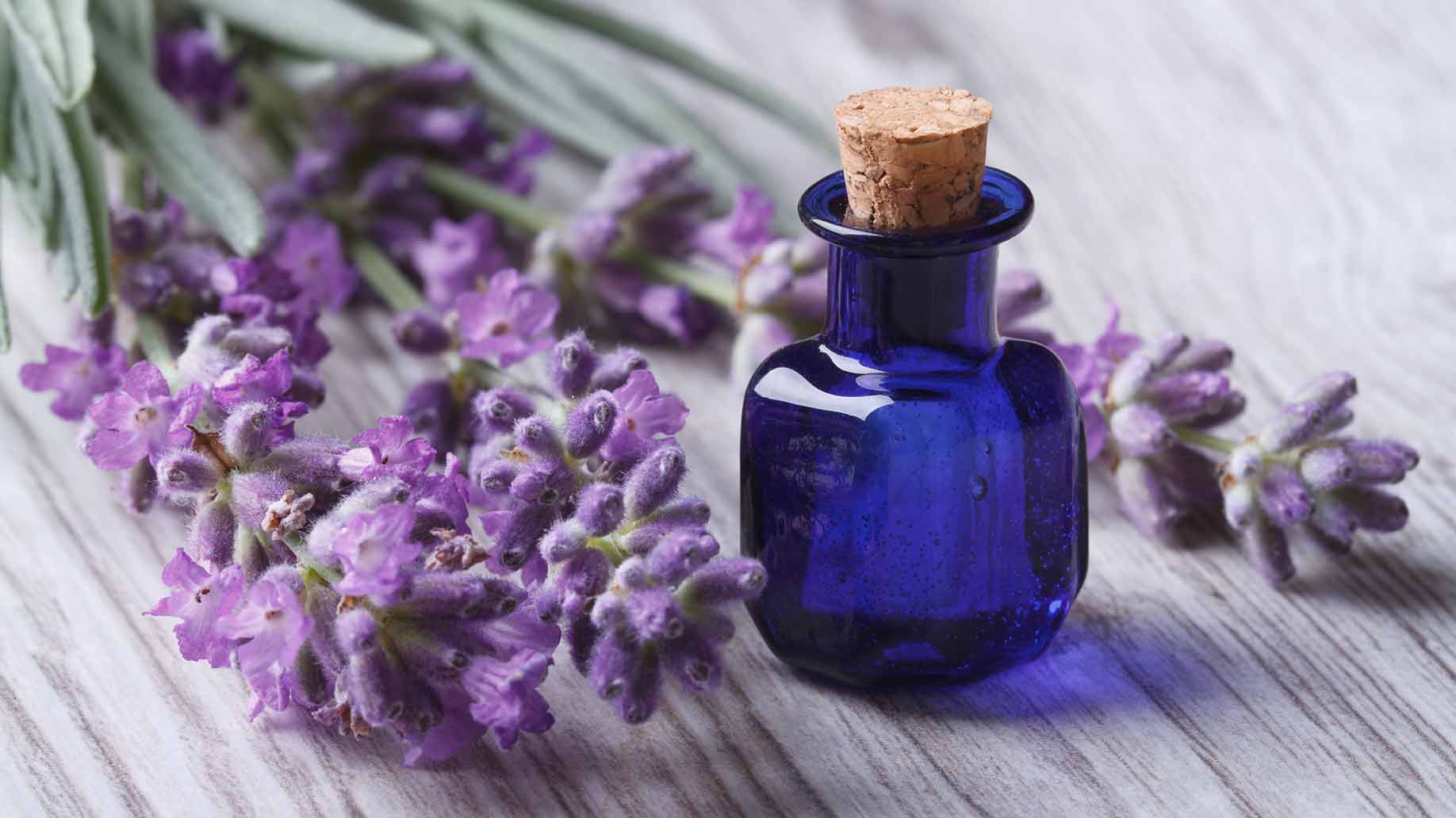
Lavender oil is thought to stimulate hair growth in the same way as minoxidil — by increasing blood circulation to the areas where it is applied.
Lavender has also been shown to reduce stress, and research has shown that emotional or physiological stress is a common cause of hair loss.
A study published in Toxicological Research tested the hair growth effects of lavender oil in mice. Researchers shaved the backs of mice and divided them into 5 groups of 18 mice each: a salt-water control group, a jojoba oil control group, a 3% minoxidil treatment group, a 3% lavender oil treatment group and a 5% lavender oil treatment group. Each substance was applied topically to the mice daily, 5 times a week, for 4 weeks.
At weeks 1, 3 and 4, the backs of the mice were photographed to evaluate the darkening of skin color. Hair growth in each group was rated on a score ranging from 0-100%. Skin samples were examined by fluorescent microscopy.
As the experiment progressed, the hair follicle number and depth in the 3% minoxidil, 3% lavender oil and 5% lavender oil groups increased markedly compared to the control groups. At 4 weeks, all of the 3 treatment groups showed a significantly increased number of hair follicles, deepened hair follicle depth and thickened dermal layer. The minoxidil group showed 100% hair regrowth compared to 95% hair regrowth for the 5% lavender oil group.
Method: Add 5 drops of lavender essential oil to one tablespoon of jojoba oil. Massage into the scalp and leave on for at least 30 minutes before shampooing.
Recommended:
4. Onions and Garlic
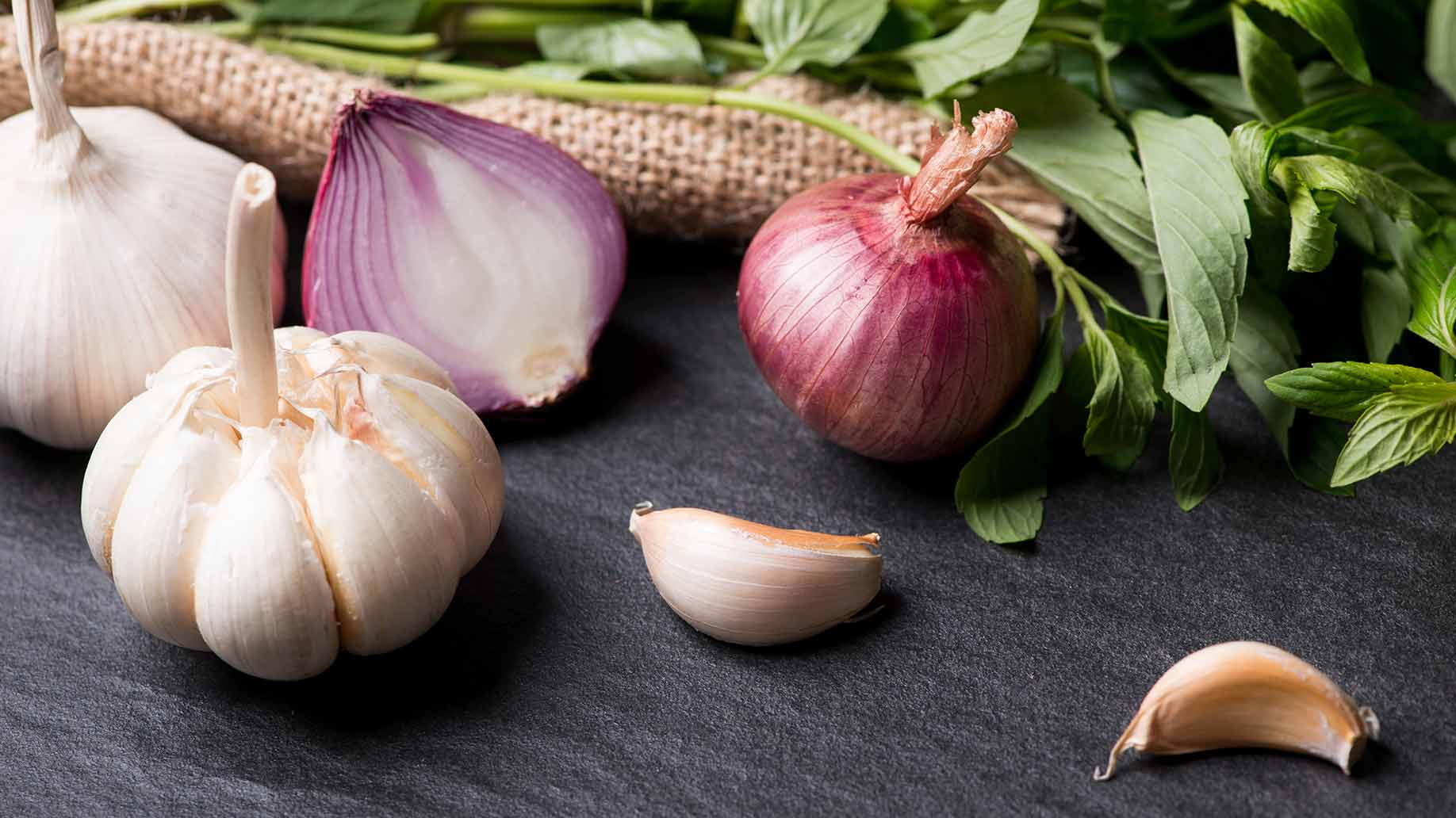
Garlic and onions are both part of the allium family and contain many of the same beneficial substance including organosulfur compounds.
Sulfur is a structural part of keratin, the protein hair is made of. Thus, garlic and onions can help strengthen hair by contributing to keratin synthesis.
In addition, they may promote hair regrowth by increasing blood flow to the scalp to stimulate hair follicles. Research has shown that garlic dilates capillaries and enhances blood circulation in the skin.
A study published in the Journal of Dermatology tested the effectiveness of topical onion juice in the treatment of alopecia areata. Also known as spot baldness, alopecia areata is an autoimmune disease which causes patchy hair loss. A treatment group of 23 patients were advised to apply crude onion juice to bald spots twice daily for two months. A control group of 15 patients applied tap water.
Onion juice gave significantly better results than tap water. In the onion-juice group, hair re-growth was seen in 74% of patients at 4 weeks and 87% of patients at 6 weeks. In the tap-water group, only 13% of patients showed hair regrowth by the end of the 8-week study.
A clinical trial performed by dermatologists from the Mazandaran University of Medical Sciences in Iran examined the efficacy of topical garlic gel in the treatment of alopecia areata. Researchers recruited 40 patients with up to 3 bald patches and randomly assigned them to a garlic group or a placebo group.
In the treatment group, an odorless gel containing 5% garlic extract was rubbed on the bald spots and left for an hour twice daily. The same procedure was carried out in the control group with a non-garlic gel. Both groups also received the standard treatment of a topical corticosteroid.
After 3 months, 95% of patients in the garlic group had moderate or good hair regrowth. Hair count numbers were significantly higher in the garlic group than in the control group. The garlic group also had a significant decrease in size of bald spots.
Method:
- To make an onion juice hair treatment, peel and roughly chop an onion. Use a blender or food processor to reduce the onion to a pulp. Pass the onion through a fine sieve to separate out the juice. Massage the onion juice into the scalp and leave on for 20 minutes before shampooing.
- To make a hair oil from a head of garlic, peel the cloves and squeeze them in a garlic press over a bowl. Strain the garlic pulp through a fine sieve to separate out the pure juice. Mix the juice with a tablespoon of carrier oil such as grapeseed oil, jojoba oil or melted coconut oil. Massage the mixture into the scalp and leave it on for an hour before shampooing.
Recommended:
- Onion (Bulb) – Capsules
- Onion – White Powder Organic
- Odorless Garlic – Softgels
- Organic Garlic Powder – Organic
5. Pumpkin Seed Oil
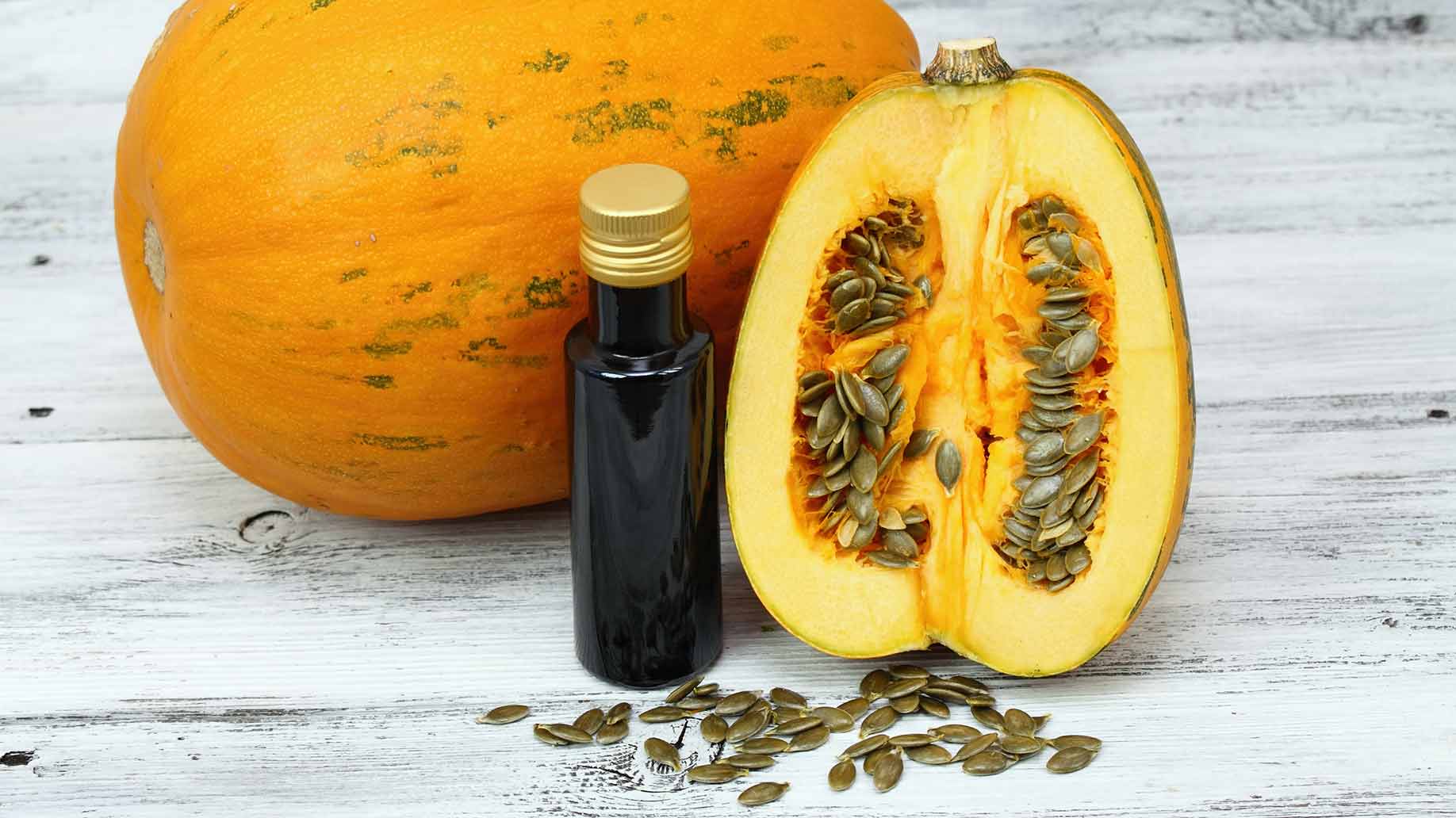
Pumpkin seed oil works to combat hair loss in much the same way as saw palmetto. Research has shown that phytosterols in pumpkin seeds inhibit the 5-alpha-reductase (5-AR) enzyme which converts testosterone into the follicle-blocking androgen hormone DHT.
A trial published in Evidenced-based Complementary and Alternative Medicine examined the effect of pumpkin seed oil on hair growth in men with androgenetic alopecia. Researchers recruited 76 men with mild-moderate male pattern baldness and randomized them into 2 groups. The treatment group took four 100 mg pumpkin seed oil capsules per day for 24 weeks. The control group took identical placebo capsules.
Change in scalp hair growth was evaluated by 4 outcomes: scalp hair counts; scalp hair thickness; patient self-assessment scores; and assessment of clinical photographs by an investigator who did not know which photos belonged to the treatment group and which belonged to the control group.
The pumpkin seed oil group had significantly more hair regrowth after treatment than the placebo group. Average hair count increased by 40% in the pumpkin seed oil group compared an increase of 10% in the placebo group. Self-rated improvement score and self-rated satisfaction scores in the pumpkin seed oil group were also significantly higher than in the placebo group.
Method: Pumpkin seed extract (curcurbita pepo) supplement capsules are available in formulas ranging from 300-1,000 mg.
It’s unclear whether a higher dose than the 400 mg per day used in the study above would be more effective for hair regrowth.
Recommended:
6. Aromatherapy Massage
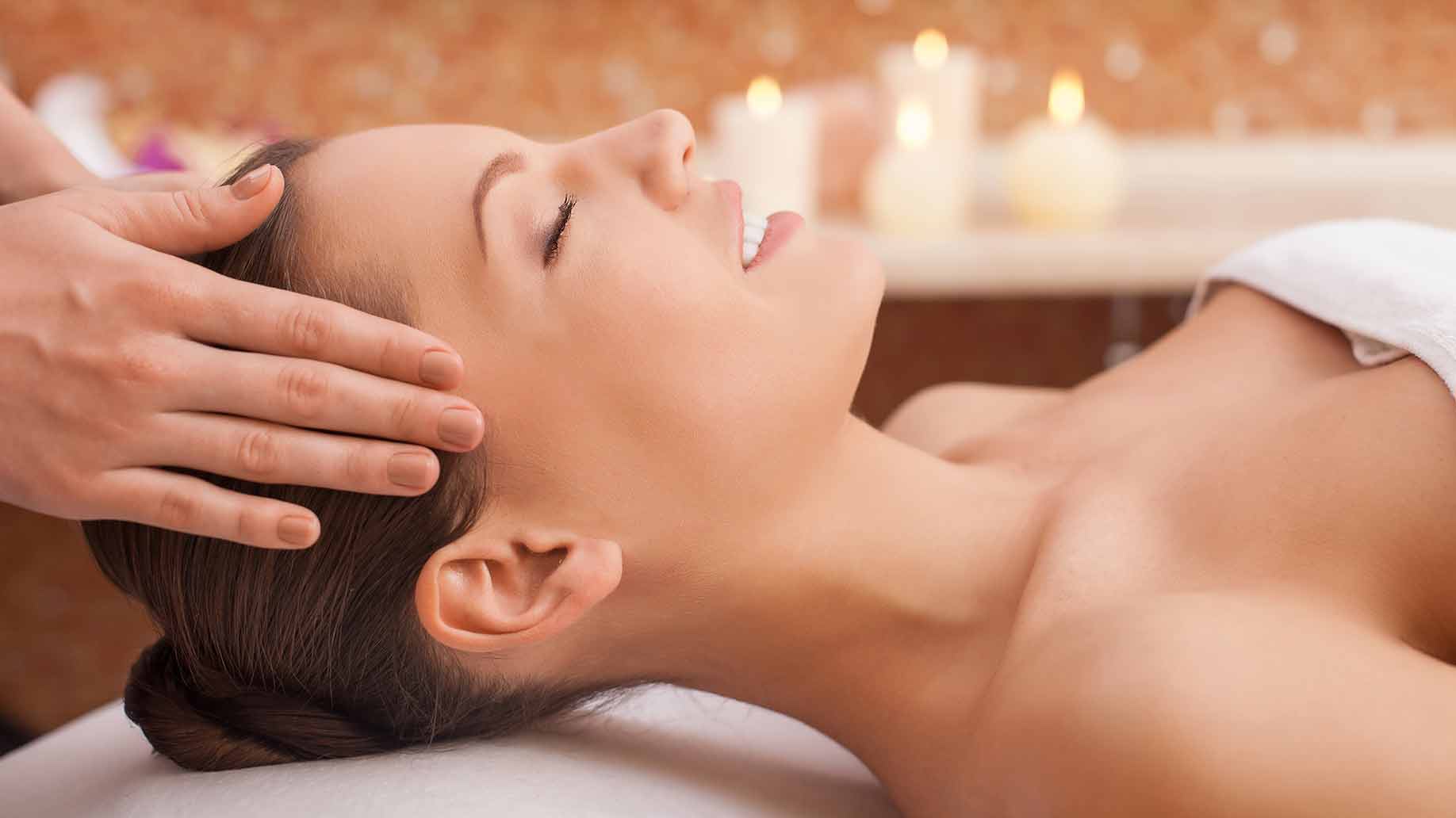
Hair loss can be caused or aggravated by stress. Research has shown that aromatherapy is an effective stress-reliever. In addition, as we have seen with rosemary and lavender, some essential oils have chemical properties that promote hair regrowth.
A study published in JAMA Dermatology investigated the efficacy of aromatherapy in the treatment of patients with alopecia areata. A total of 84 patients with alopecia areata (spot baldness) were randomized into 2 groups. The active group received a solution containing 20 ml grapeseed oil, 3 ml jojoba oil, 2 drops thyme oil, 3 drops rosemary oil, 3 drops lavender oil and 2 drops cedar oil. The control group received the same carrier oils (grapeseed and jojoba) without the added essential oils.
A trained aromatherapist demonstrated the technique of scalp massage with the oils. Patients were instructed to massage the oils into the scalp for a minimum of 2 minutes every night and to then wrap a warm towel around their head.
Before-and-after photographs of the scalp were scored independently by 2 dermatologists who were not told which patients received the essential oils. A computerized image analyzer was used to map the areas of alopecia at the beginning and end the study.
After 7 months 44% of the patients in the essential oil group showed improvement compared to 15% of patients in the control group. The essential oil group also had a significant reduction in the area affected by alopecia. One patient showed an excellent response to essential oil therapy with more than 80% hair regrowth in all areas.
Method: Make your own scalp massage oil using the formula described in the study or add a few drops of peppermint oil to the recipe:
- 20 ml grapeseed oil
- 3 ml jojoba oil
- 2 drops thyme oil
- 3 drops rosemary oil
- 3 drops lavender oil
- 2 drops cedar oil
Recommended:
- Aromatherapy – 100% Pure Therapeutic Grade Essential Oil
- Essential Oils – Therapeutic Grade Essential Oil Set w/Free E-Book
- Humidifier – Essential Oil Diffuser Aroma Essential Oil Cool Mist
7. Iron

Iron deficiency is very common, especially in premenopausal women and vegetarians. Iron is necessary for the production of hemoglobin, the substance in red blood cells which carries oxygen and nutrients to the tissues.
If you are iron-deficient, oxygen will be sent to the vital organs, and non-essential tissues such as the hair follicles will be oxygen-deprived. This is why hair loss is a common symptom of iron-deficiency anemia. However, research has shown that low iron levels can cause hair loss in people with or without anemia.
A study published in the Journal of Korean Medical Science evaluated the relationship between iron and hair loss. Researchers collected medical data from 210 patients who visited a hospital clinic and were diagnosed with female or male pattern hair loss and compared it to data from 210 patients who visited the clinic for a regular check-up and did not suffer from hair loss. All patients underwent screening for serum ferritin (SF), an iron-binding protein in the blood which is a marker for total body iron stores. SF decreases from the very early stages of iron deficiency.
Serum ferritin concentration was significantly lower in patients with female pattern hair loss, compared with normal healthy women. Premenopausal hair loss patients showed much lower SF than age and sex-matched controls. Over 80% of female hair loss patients had an SF level lower than 70 ug/L, compared to less than 20% of controls. Among male pattern hair loss patients, 23% had an SF level lower than 70 ug/L, whereas no one in the control group of age-matched males did.
A study published in Skin Pharmacology and Physiology evaluated serum ferritin and vitamin D levels in women with chronic telogen effluvium (hair shedding) or female pattern hair loss. Researchers took blood samples from 80 women diagnosed with hair loss and compared the results with 40 age-matched females with no hair loss. SF and vitamin D levels were determined for each participant.
Both serum ferritin levels and vitamin D levels in the women with hair loss were significantly lower than in the controls. Both of these levels were lowest in the women with the most severe hair loss. The researchers note that screening to establish SF and vitamin D levels and supplementing deficient patients may be beneficial in the treatment of hair loss.
Method: If you suffer from hair loss, make sure you’re eating plenty of iron-rich foods. Meat, poultry and fish contain heme iron, which is much more efficiently absorbed than non-heme iron from plants.
Vegetarians and vegans should carefully plan meals to include a good source of iron such as legumes or dark leafy greens and pair it with a good source of vitamin C to boost absorption.
Although iron supplements are widely available, they can cause gastrointestinal side effects such as nausea or constipation, and overdoses can be dangerous. If you are considering taking iron supplements for hair loss, see a doctor to get a serum ferritin test and determine the right dose.
Recommended:
Final Word
Here are a few simple tips to help you avoid preventable hair loss:
- Eat a diet with plenty of protein and mineral-rich foods.
- Use a conditioner after washing your hair to make it more elastic and less prone to breakage.
- Use a wide-toothed detangling comb on wet hair.
- Avoid hairstyles that pull your hair tight, such as cornrows, buns or ponytails.
- Avoid harsh chemical treatments such as permanents or hair dyes containing ammonia.
- Avoid exposing hair to excessive heat from hot rollers, curling irons, straighteners or hot oil treatments.
- Avoid compulsively pulling, twisting or rubbing your hair.

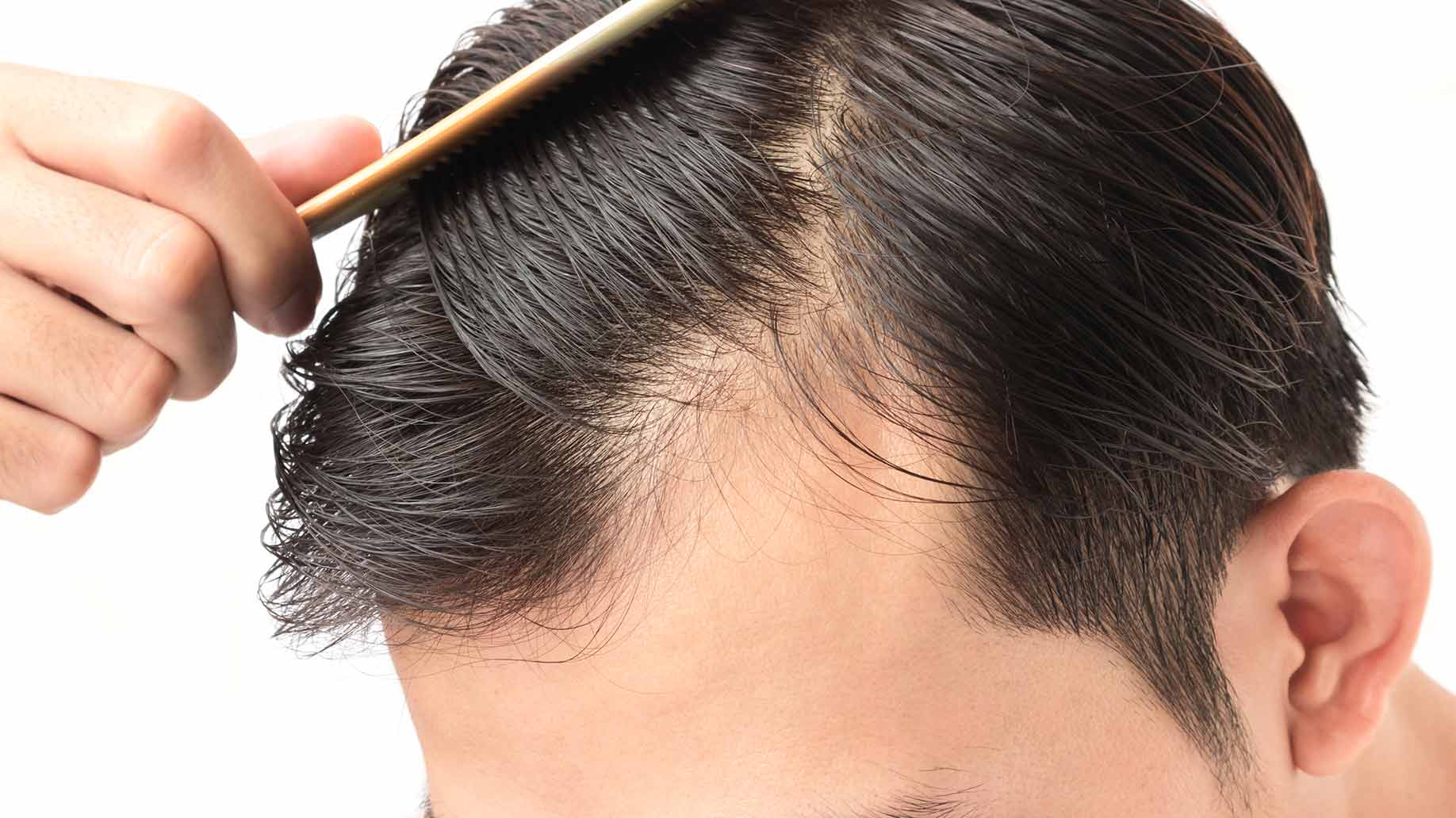
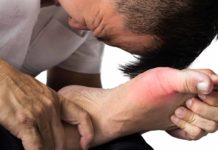
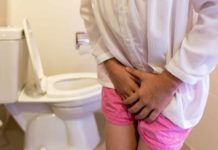

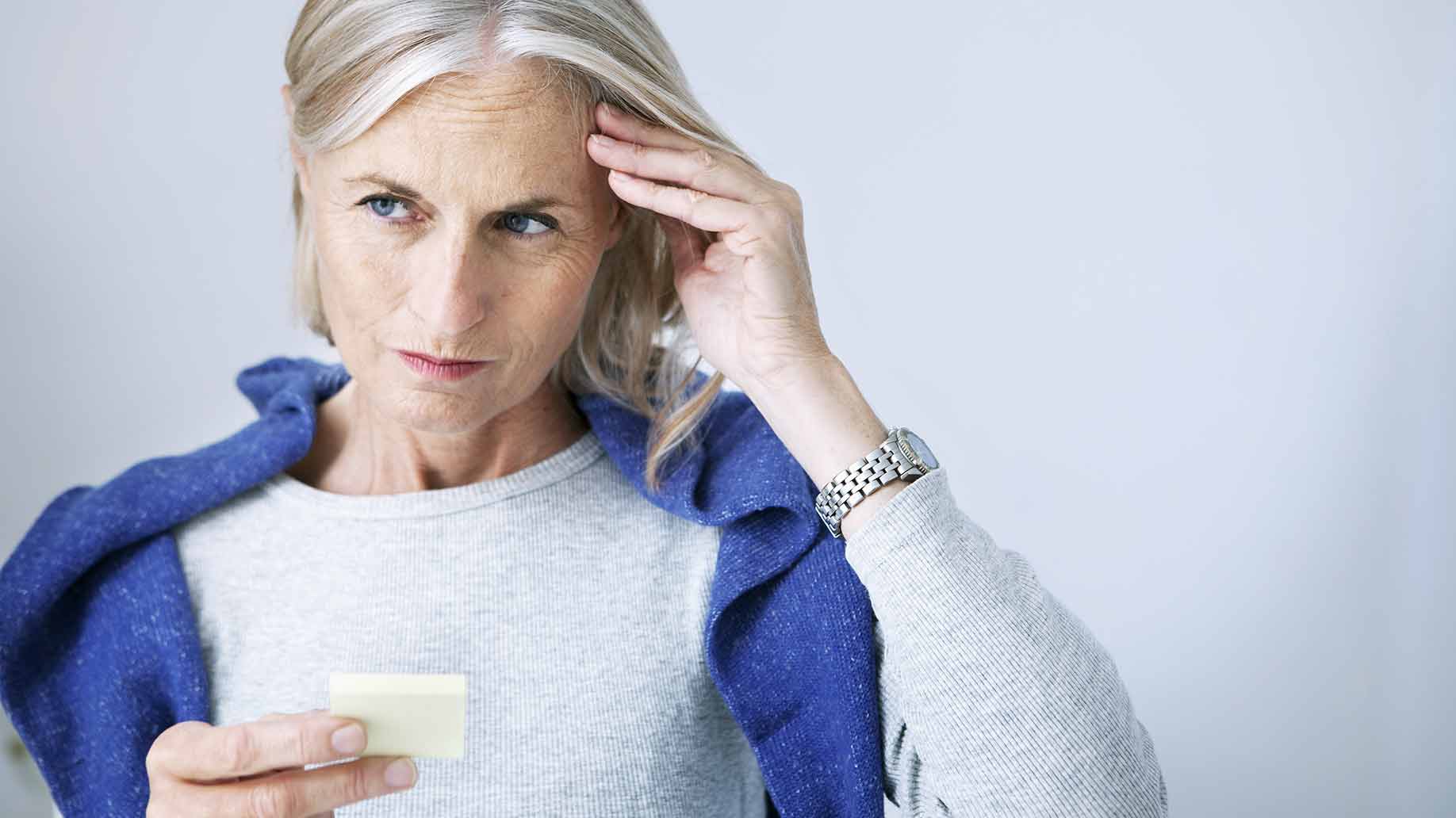
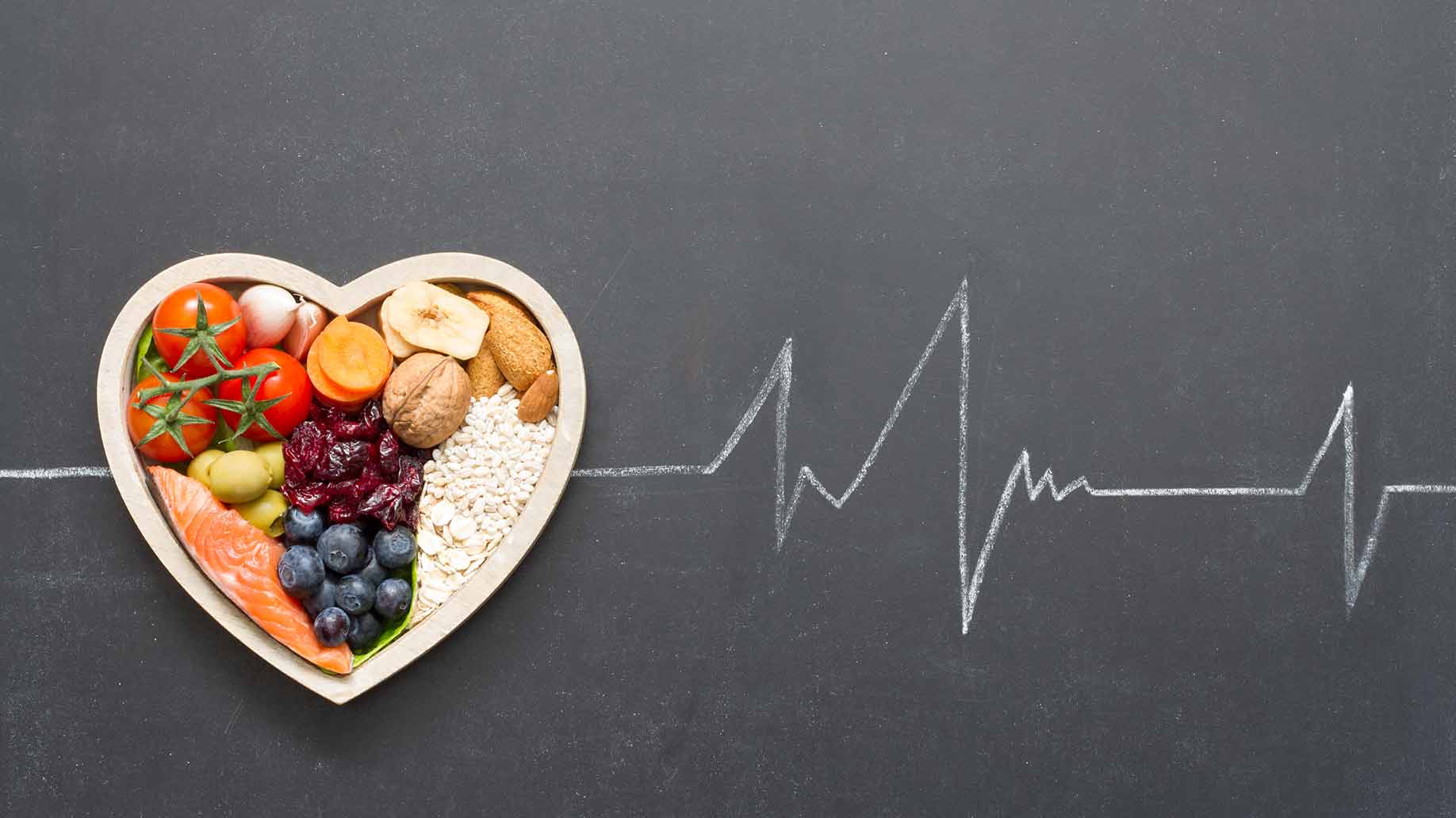

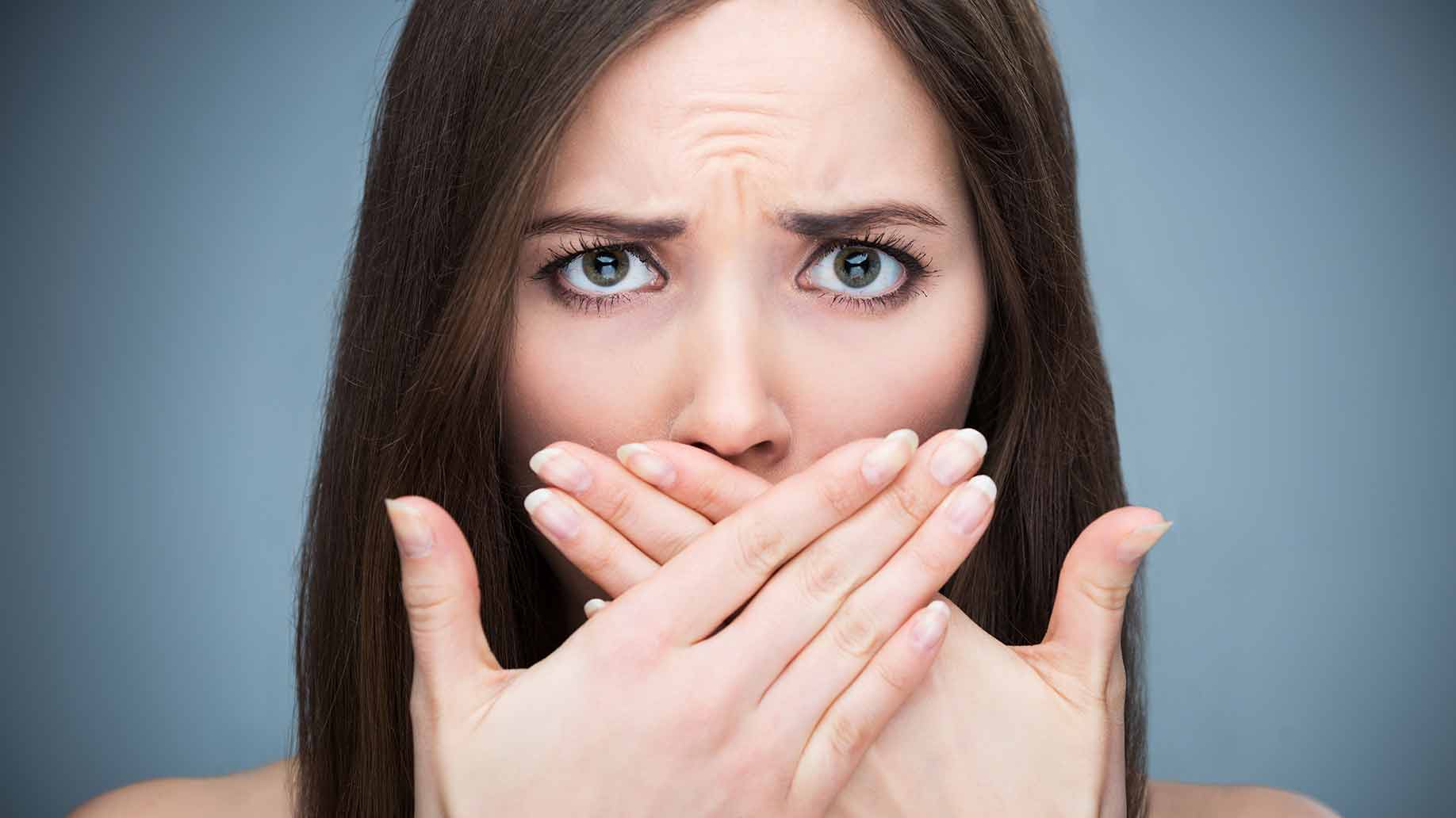

To Avoid hair Loss There are some precautions that can be taken. Some foods and treatments are known to have a significant impact on the health of our hair. You can take some actions like herbsand supplements, vitamins A, B, E and omega-3 acids, applying egg oil, treating the hair with hot oil, Rub hair withgreen hair, Apply fenugreek seeds treatments, avvoid hairpieces and wigs
Really interesting post. This affects many of my friends and I will be sharing this with them!